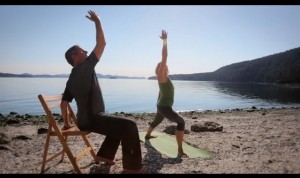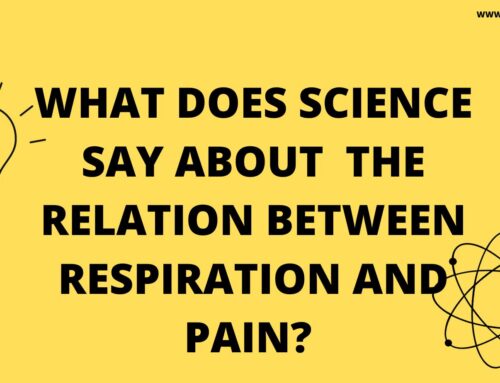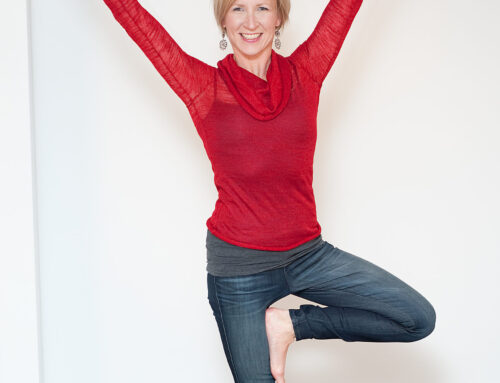Overcome Pain with Gentle Yoga Videos Available!
Resources created by Neil Pearson & Shelly Prosko, Physical Therapists and Yoga Therapists
It is known that pain is a complex biopsychosocial phenomenon that consists of many factors that influence the ability to move with ease, including capability of the physical body, breath pattern, psychological and emotional factors, and spiritual or social interactions. In the treatment of chronic or persistent pain, we know that the best long-term improvements occur when people can recover movement and participate in more activities of their daily lives.
Research supports that yoga can be used to address both physical and psychological aspects of persistent pain (Wren et al, 2011). “There is evidence that yoga may be useful for several pain-associated disorders” (Bussing et al, 2012) and growing evidence that specifically suggests different aspects of yoga can help not only reduce and manage pain, but also help people move and function better, and improve health-related quality of life (Ware et al 2013, Holtzman et al 2013, Moonaz et al 2015).
Although we have evidence to support the benefits of yoga for management of persistent pain and many yoga practitioners are using yoga to help their students/clients in pain, there are actually very few resources available for people in pain to practice yoga in a way that safely and appropriately addresses the complex issues of persisting pain and helps people progressively increase movement with ease.
Neil Pearson, physical therapist, yoga therapist, UBC professor, and myself, wanted to create an accessible and safe resource that included more specific guidance to help people in pain. We developed “Overcome Pain with Gentle Yoga”, a series of 7 video sessions consisting of a variety of different practises, each with a different theme that addresses unique challenges that people with chronic pain face.
We chose 7 different themes based on qualities that we knew people with persistent pain often times have difficulty with and can influence pain experience.
The following 7 themes that we have chosen to address in the videos are:
confidence, trust & letting go, patience, courage, persistence, balance and purpose.
Based on our clinical experience in working with people in pain (and what some of the literature reports) we found by addressing these themes and cultivating these specific qualities through different breathing practises, hand positions (mudras), affirmations (mantras), visualizations, mindfulness meditations and movements, it can provide deeper and richer impacts on one’s pain experiences.
Neil explains as an example: “letting go of muscle tension can be extremely difficult in the face of persisting pain. Some people have the sense that their body is tight, yet they have difficulty letting the muscles relax. Others feel that their thoughts are equally knotted up, or their breath doesn’t feel full anymore. In the letting go practice, we use many techniques to help release tension, to let go. We work on letting go through our thoughts, our breath, our body, and through movement.”
The first 5-10 minutes of each of the 7 practices consists of mindfulness meditations, visualizations, affirmations/mantras, hand positions/mudras and breathing practices that anyone can follow. This is particularly useful when needing relaxation techniques during a flare-up.
The second part of each practise includes 20-30 minutes of mindful movement, with the ability to choose a variety of options including progressive movements that are safe, appropriate and unique to the challenges that people with chronic pain face. This is useful when the person is having a ‘good’ day and is ready for a challenge and to move more.
We want to empower people by providing them with a readily accessible resource that helps promote self-management of persistent pain and to be able to do so in the comfort of one’s own home.
One of the unique features of these videos is that Neil is in a chair for the entire sessions at the same time I am demonstrating the practises on the mat.
We had never seen a video where a wide variety of levels could be practised at the same time, so we wanted to ensure the videos had a very inclusive feel to them and were appropriate and beneficial for all levels, including people who are unable to stand or transition to and from lying, or find it challenging. This gives them an option to sit in a chair for the entire practice or just for parts of it. Or, if they decide that one day they feel like trying to get out of the chair, there is the option to follow me; or if they want to stay seated, they can follow Neil.
There is something for everyone to choose from in each practise: whether it is performed in sitting, lying, kneeling or standing. This is important to ensure success every day!
Changing pain is possible, but takes a great deal of regular practice and persistence. We want these videos to act as an adjunct to one’s current therapy. People can do these every day: whether experiencing a flare-up and need the more gentle breathing and meditation practises, or if one is having a better day and is ready and wanting to move more.
These videos were created to benefit a variety of populations:
1) People suffering from persistent or chronic pain of varying functional levels: People who are physically challenged and require modifications or those that are more mobile and require more of a challenge, can all benefit from these videos.
2) A unique and valuable resource for health care providers, yoga teachers/therapists, or movement specialists. Anyone who works with people suffering from chronic pain or presents with other challenges or dysfunctions in which improving movement and living well again is a desired outcome can benefit from these new practices.
3) Anyone looking for a well rounded gentle and mindful yoga practice that consists of movement, breathing practices and meditations either for themselves or as a resource to give to their students or patients/clients.
We intentionally filmed these practises outdoors, in the beauty of Saltspring Island, Canada, with the hopes that it captures some of those feelings of joy, expansiveness and connection that we feel when out in nature and perhaps enhances the participant’s mood, reducing the pain experience or simply brightens a moment in the day in some way.
The intention of these videos is to guide people to move and function with more ease and live well again. It is not meant as a cure for chronic pain. It is meant to be used as an adjunct to current treatments and under the supervision of a health care provider for safety and optimal success. However, with proper education and knowledge of pain science and regular, persistent and compassionate practise of these videos along with the guidance of your health care provider, it is possible to change pain with time and patience.
The 4 minute trailer can be viewed HERE and they are available for download online:
on Vimeo
or to order DVD contact www.paincareu.com
Neil and I sincerely hope these videos help empower each person and help to create success along the path of self-management of persistent pain.
We hope everyone enjoys and immensely benefits from them. Please let us know if there are any comments, questions or feedback!
**These videos are not meant to replace your current treatment, nor act as medical advice. Please seek clearance and guidance from your medical healthcare professional prior to participating.





